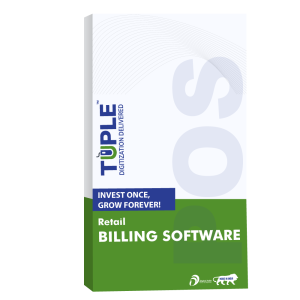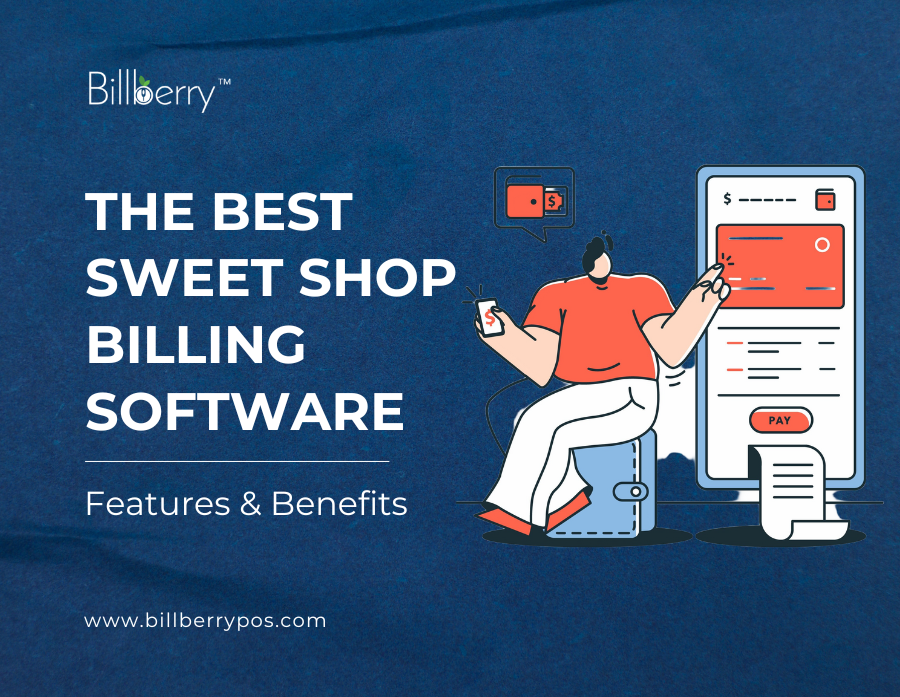Running a sweet shop is more than just preparing and selling sweets. It involves managing a range of operations, from tracking inventory and handling customer transactions to ensuring tax compliance and monitoring sales. Traditional billing methods can lead to inefficiencies, errors, and delays, impacting both business performance and customer experience.
A well-integrated sweet shop billing software is designed to eliminate these challenges by automating essential processes. By implementing a POS software for sweet shops, business owners can streamline their daily operations, reduce waste, and enhance customer satisfaction. This blog explores the key features and benefits of a billing software for sweet shops and why it is a necessity for modern businesses.
Why Billberry POS is the Best Choice for Sweet Shops
When it comes to choosing the right sweet shop billing software, Billberry POS stands out as a feature-rich and highly efficient solution. Designed specifically for sweet shops, bakeries, and confectionery businesses, Billberry POS ensures smooth operations with its advanced functionalities.
Key Benefits of Billberry POS:
~ Comprehensive Inventory Management – Tracks stock levels in real-time and prevents wastage with automated expiry alerts.
~ Fast and Accurate Billing – Handles high transaction volumes with ease, minimizing checkout times.
~ Weighing Scale Integration – Ensures precise pricing for weight-based sales, reducing manual errors.
~ Multi-Outlet Support – Ideal for franchises and chain stores with centralized monitoring and stock transfers.
~ Cloud-Based Access – Manage your business remotely from any device with real-time data synchronization.
~ GST Compliance – Automates tax calculations and generates accurate invoices for hassle-free tax filing.
~ Multi-Payment Support – Accepts UPI, credit/debit cards, wallets, and cash for seamless transactions.
~ Advanced Reporting & Analytics – Provides insightful sales and performance reports for better decision-making.
~ Barcode Scanning – Speeds up billing by instantly fetching product details, ensuring accurate transactions.
~ Weighing Scale & Barcode Integration – Combines precise weight-based pricing with barcode scanning for error-free billing and efficient inventory management.
Book Free Demo: BillBerry POS For Sweet Shop
Essential Features of a Sweet Shop Billing Software
💳 1️⃣ Fast & Accurate Billing System
~ Fast billing POS system to reduce customer wait times.
~ Barcode scanning and digital invoicing for accuracy and efficiency.
~ Multi-payment POS system supporting UPI, cards, wallets, and cash transactions.
⚙️ 2️⃣ Advanced Inventory & Expiry Management
~ Sweet shop inventory management with real-time stock updates.
~ Expiry and batch management POS to prevent spoilage and minimize wastage.
~ Automated low-stock alerts to ensure uninterrupted business operations.
🏬 3️⃣ Multi-Outlet Management for Franchise Sweet Shops
~ Multi-outlet sweet shop POS for centralized control across branches.
~ Uniform pricing and seamless stock transfers between different locations.
~ Integrated reporting tools for better insights and operational efficiency.
⚖️ 4️⃣ Weighing Scale Integration for Accurate Billing
~ Weighing scale POS integration for precise product pricing.
~ Eliminates manual entry errors for weight-based billing.
~ Weighing scale billing system ensures fair and transparent transactions.
📜 5️⃣ GST-Compliant Invoicing & Tax Reports
~ GST billing software for error-free tax calculations and compliance.
~ Automated invoice generation to meet regulatory requirements.
~ Food business billing software with integrated tax reporting for easy filing.
☁️ 6️⃣ Cloud-Based POS for Remote Business Management
~ Cloud-based POS software for remote access and real-time monitoring.
~ Secure data storage with automatic backups to prevent loss.
~ Multi-device compatibility for efficient business management on the go.
Also Read: HOW TO OPEN A SWEET SHOP IN INDIA
How to Choose the Best Sweet Shop POS System
– User-Friendliness: Intuitive interface for easy operation.
– Scalability: Adapts to growing business needs, from single shops to franchises.
– Customization: Features tailored for mithai shop POS software and sweet shop businesses.
– Support & Maintenance: 24/7 assistance and regular software updates.
– Security: Data encryption and role-based access control for enhanced safety.

Perpetual License Option: If you prefer not to store data on the cloud, you can opt for a perpetual license software, like TUPLE POS, which is available on amazon, which requires a one-time payment and offers lifetime access without additional subscription fees.
Final Thoughts
Investing in a sweet shop billing software is an essential step toward modernizing business operations. With its comprehensive inventory tracking, seamless billing, and cloud-based accessibility, Billberry POS emerges as the perfect solution for sweet shops of all sizes. Whether managing a single shop or a multi-outlet franchise, implementing Billberry POS ensures efficiency, accuracy, and an enhanced business experience.








